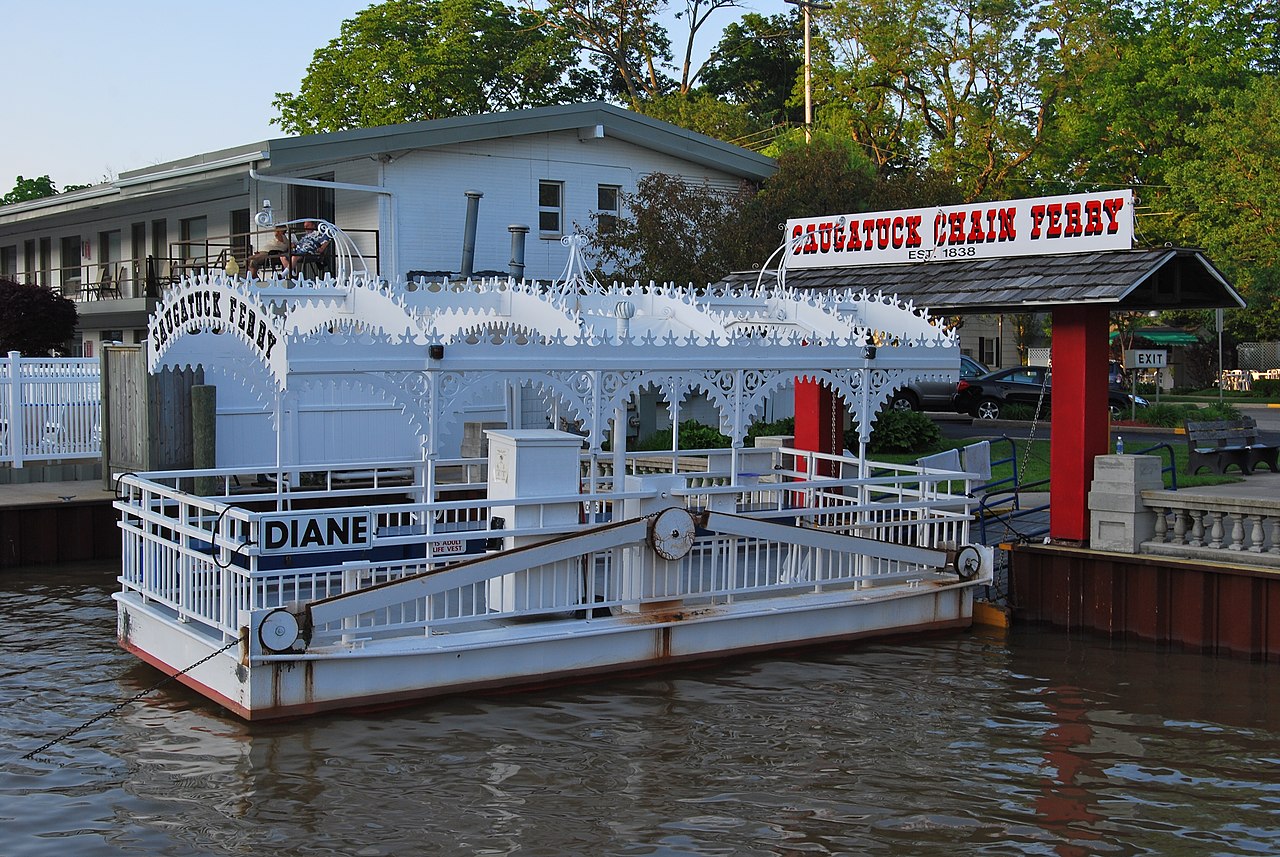Cable ferries have been used by humans for longer than historians can tell.
In Ancient Egypt, people were already using boats for sea and river travel, so it is safe to say that crossing rivers by using vessels is part of our historical culture as a species.
Today, we will discover and unravel the secrets of cable ferries. But what is a cable ferry precisely?
Read further to learn more.
What is a Cable Ferry?
A cable ferry is a type of ferry guided or propelled through a river or waterbody by cables connected to two shores.
Cable ferries are also referred to as swing ferry, chain ferry, floating bridge or punt. When the wire starts to pull the vessel, the boat moves from one shore to the other by a simple pulling movement.
There are different types of cable ferries and not all cable ferries need engines to work.
Types of Cable Ferries
There are different types of cable ferries with distinctive characteristics and interesting facts behind them.
For instance, the yellow color is used to distinguish Sweden’s cable ferries. Other ferries, such as the Parker’s Ferry in North Carolina, United States, still exist because the traffic of certain routes does not justify the construction of new bridges.
However, although the characteristics and routes of cable ferries vary in different parts of the world, there are three different types of cable ferries that operate today.
Reaction Ferry
Reaction ferries use the power of river currents to navigate through water. The design of reaction ferries makes them operate faster and more efficiently in rivers with strong currents. Reaction ferries rely on the classic cable system to move from one point to another without an engine.
Powered Cable Ferry
Powered cable ferries used electric motors or diesel engines to move through a lake or river.
These ferries use wheels to pull themselves along the overhead cable. However, there are special types of powered cable ferries that can freely move to their destination, but use the cables to directly connect to the power supply.
Hand-Operated Cable Ferry
Hand-operated ferries are the most classic and old types of cabled ferries. This small ferry type is operated by simply pulling crankless flywheels on the ferry or from the shore.
They are also referred to as human-powered chain ferries.
History of Cable Ferries
Historians agree that cable ferries have been used for crossing bodies of water before recorded history. In the 13th century, the Hampton Ferry was used to pass River Avon and take Benedictine Monks to their destination.
William Pitt, a prominent Canadian engineer and ferryman, installed a small ferry powered by cables that would transport people across the Kennebecasis River. Nowadays, car ferries are used to transport cars, motorcycles, and lighter vehicles in different parts of Canada.
In the United States, cable ferries and other vessels were particularly prominent in early transportation in the Sacramento Delta of California.
Early cable ferries were also referred to as “High Rope Ferry” because they were propelled by either ropes or steel chains installed on each shore of two locations.
These materials were replaced by wired cable in the 19th century, which started a new page in the history of cable ferries.
Although cable ferries originally worked under the operation of a private owner, government authorities started to own and operate punts as time passed.
Cable Ferry Routes in the United States
According to Wikipedia, as of 2023, there are a total of 29 cable ferry routes in the United States, which include widely known ferries such as Valley View, Sunnybank, and Woodland Ferry.
The following table includes all currently recognized cable ferry routes in the United States, including the ferry name, location by state, and waterbody route.
| Ferry | State | Body of Water |
|---|---|---|
| Akers Ferry | Missouri | Current River |
| Avoca Island Ferry | Louisiana | Intracoastal waterway to Avoca Island |
| Bemus Point-Stow Ferry | New York | Chautauqua Lake |
| Buena Vista Ferry | Oregon | Willamette River |
| Canby Ferry | Oregon | Willamette River |
| Elwell Ferry | North Carolina | Cape Fear River |
| Fort Ticonderoga Ferry | New York and Vermont | Lake Champlain |
| Fredericktown Ferry | Pennsylvania | Monongahela River |
| Green River Ferry | Kentucky | Green River |
| Hatton Ferry | Virginia | James River |
| Ironton Ferry | Michigan | Lake Charlevoix |
| J-Mack Ferry | California | Sacramento River |
| Los Ebanos Ferry | Texas | Rio Grande |
| Merrimac Ferry | Wisconsin | Wisconsin River |
| Merry Point Ferry | Virginia | Corrotoman River |
| Parker’s Ferry | North Carolina | Meherrin River |
| Princeton Ferry | California | Sacramento River |
| Reed’s Ferry | Kentucky | Green River |
| Rochester Ferry | Kentucky | Green River |
| Sans Souci Ferry | North Carolina | Cashie River |
| Saugatuck Chain Ferry | Michigan | Kalamazoo River |
| Sunnybank Ferry | Virginia | Little Wicomico River |
| Sycamore Island Ferry | Maryland | Potomac River |
| Upper Ferry | Maryland | Wicomico River |
| Valley View Ferry | Kentucky | Kentucky River |
| Wheatland Ferry | Oregon | Willamette River |
| White’s Ferry | Maryland | Potomac River |
| Whitehaven Ferry | Maryland | Wicomico River |
| Woodland Ferry | Delaware | Nanticoke River |
